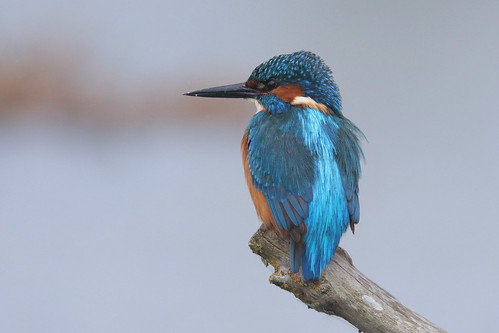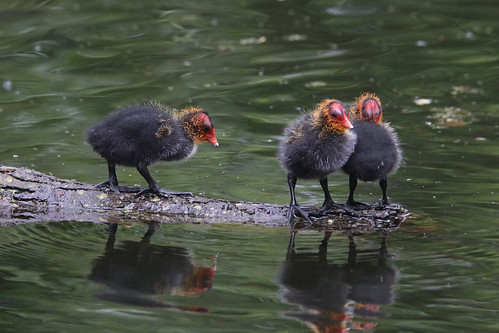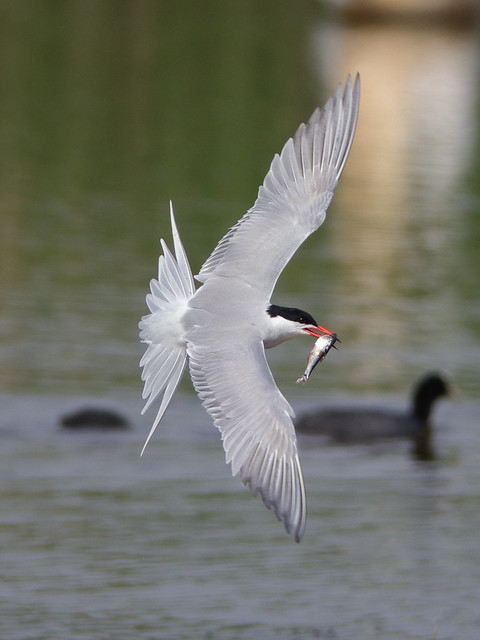 |
| Canon 80D & Tele Vue 60 refractor, 1/1250 sec, ISO 640 |
I tend to steer clear of technical write-ups on this blog as the Internet is already stuffed with photographers telling you all about what their camera can do rather than what they've actually done with it. However, given that the bulk of the traffic to my Flickr pages this year has been driven by people specifically looking for photos taken with the Canon 80D, I thought I'd share my impressions after several months of shooting with it. Please bear in mind that this is all very subjective and I can only compare the 80D against other Canon DSLRs I've used (namely the 350D, 40D and the 7D Mark I).
Noise-handling is significantly improved over the 7D Mk I. Tastes vary of course (I don't mind a little grain as long it doesn't look too obviously "digital" - and I actually prefer it to the over-aggressive noise reduction that some photographers insist on), but I find the 80D gives exceptionally clean images up to ISO 400, and stays workably clean all the way up to ISO 3200. The image below was taken in very gloomy conditions at ISO 3200, but I was still able to get a good 12x8 print out of it.
 |
| Canon 80D & Tele Vue 60 refractor, 1/1250 sec, ISO 3200 |
From ISO 4000 the noise gets progressively more obtrusive, but still manageable (as demonstrated in this shot of a black cat, taken in poor light at ISO 5000 and downscaled to 12x8). Even at the highest ISOs the 80D's large pixel count means that you should be able to get an acceptable 6x4 print provided you don't have to crop too much.
The 80D's default colour setting seems slightly desaturated compared to previous models, but this can be easily fine-tuned in-camera or in post. The "Peacock Butterfly" test certainly produces reds that look closer to nature than the over-saturated reds of older Canon DSLRs.
I use manual focus for most of my wildlife photography so I can't really contribute anything to the 80D vs. 7D Mk II autofocus debate, but on the occasions I've used the touchscreen focus I've found it to be fast, responsive and very intuitive to use. If, like me, you plan to use your camera for astrophotography now and then, you might consider the 80D's articulated touchscreen to be a more valuable feature than the 7D Mark II's advanced tracking.
Birds-in-flight are always going to be a challenge using manual focus, but so far I've found that my hit-rate is better than with any previous Canon DSLR. Would autofocus have successfully tracked this tern or would it have zeroed in on the coots in the background?
 |
| Canon 80D & Tele Vue 60 refractor, 1/1600 sec, ISO 400 |
 |
| Canon 80D + EF50mm f/1.8; 1/250 sec, f/8.0, ISO 125 |
I'm struggling to think of anything I don't like about the 80D: I miss the mini-thumbstick from the 40D and the 7D, but the touchscreen makes up for this. Overall the Canon 80D is a user-friendly and feature-packed camera (including settings for time-lapse, multi-exposure, minimum shutter speed, flicker detection, and so on) that does everything I would want from a DSLR.
See also:
More of my photos taken with the Canon 80D

Thanks for sharing your experience with the Canon 80D – it's a reliable workhorse that continues to impress! At National Store LLC, we still see strong demand for the 80D from both hobbyists and professionals in the UAE. Great read!
ReplyDelete